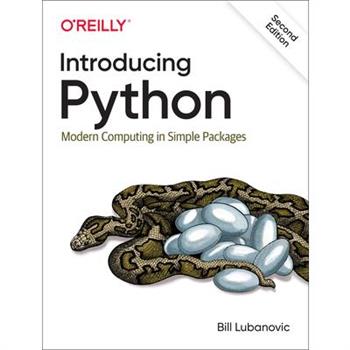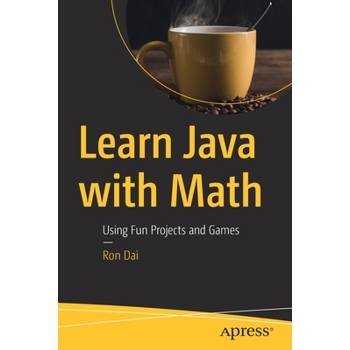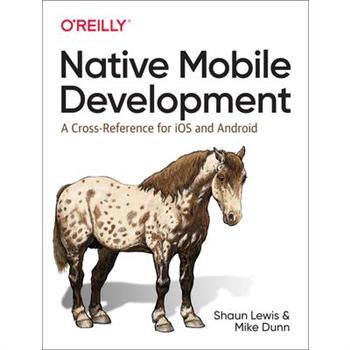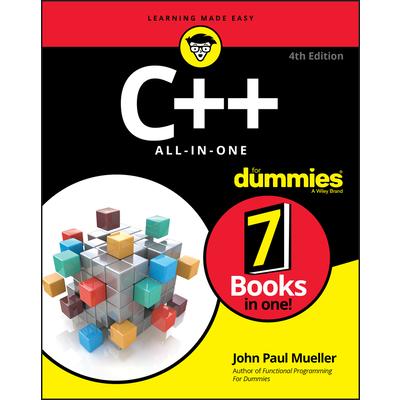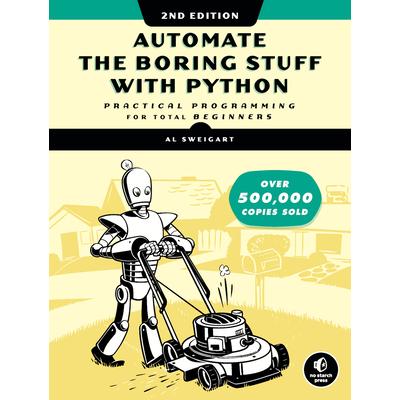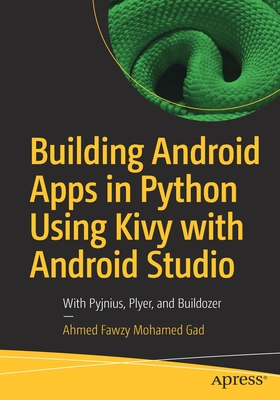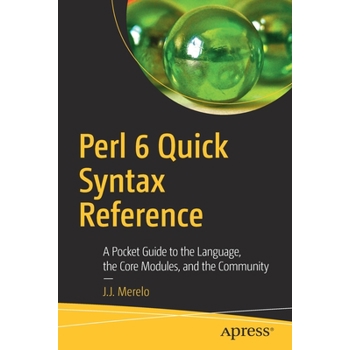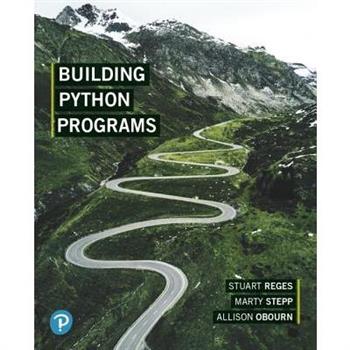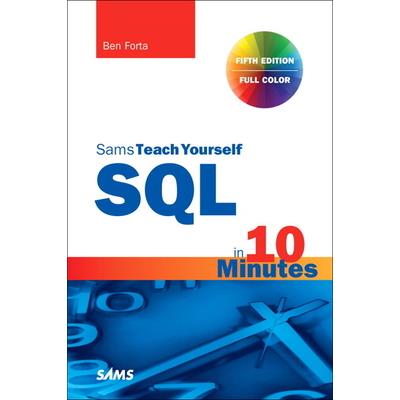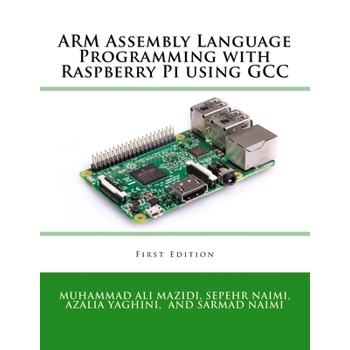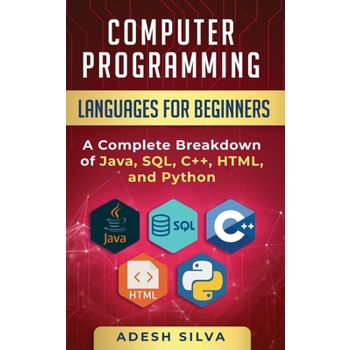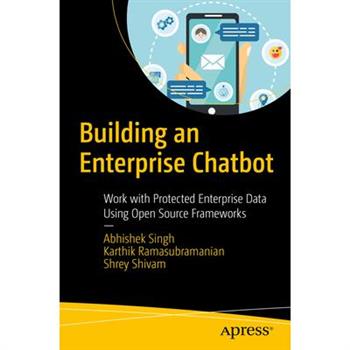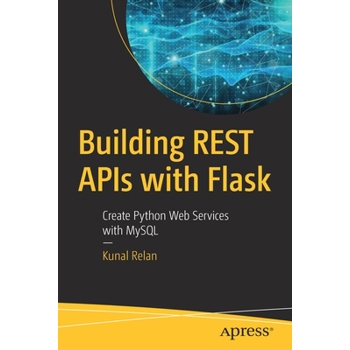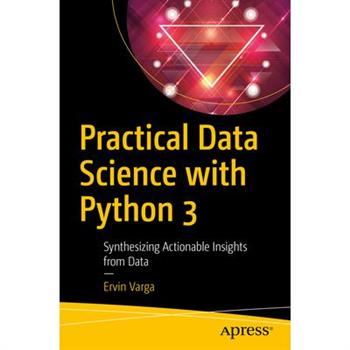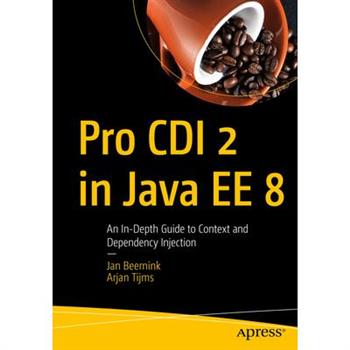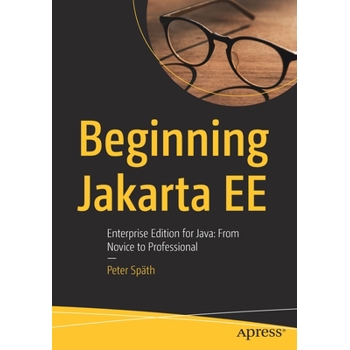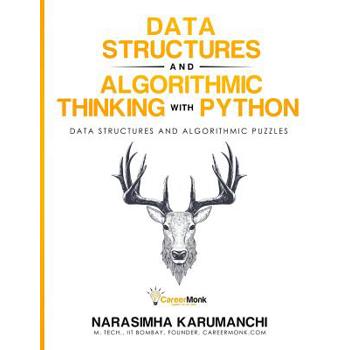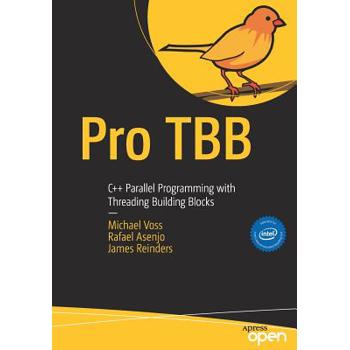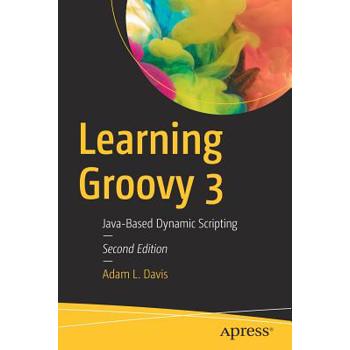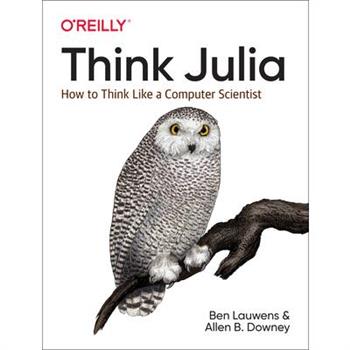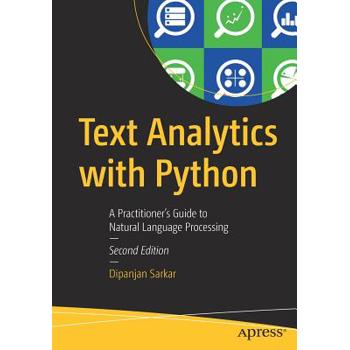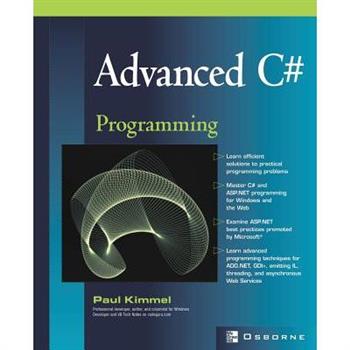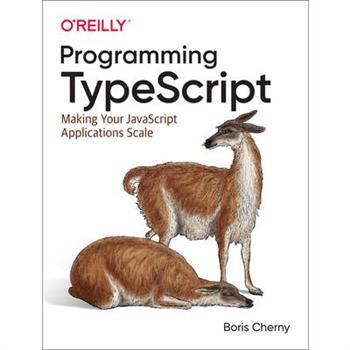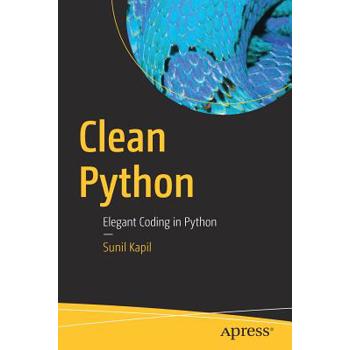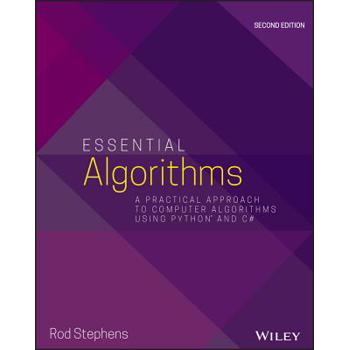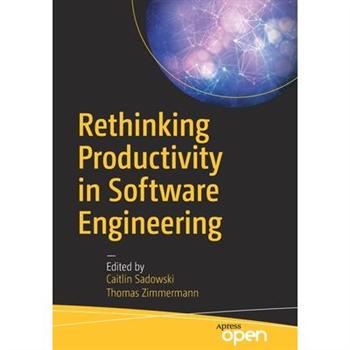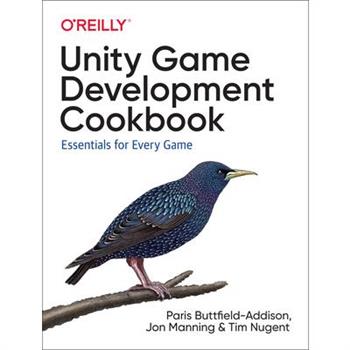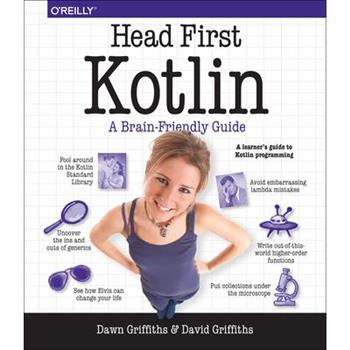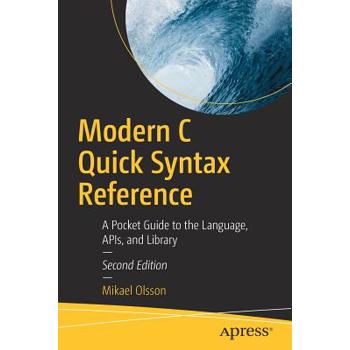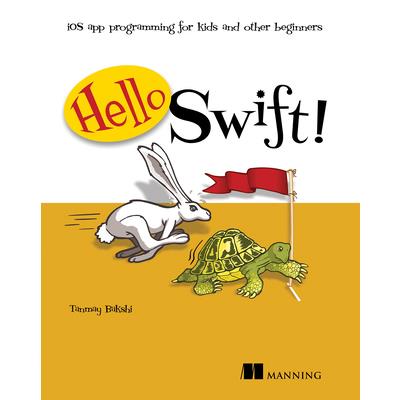SQL
How to start creating and using SQL databases, even if you have no prior programming experience. Are you looking for a more streamlined way to manage information?Do you have large volumes of data that need to be accessed through a sophisticated communication system?Could your company benefit from the advantages SQL offers?SQL, or Structured Query Language, has been around since the 80s. It has proven to be effective and efficient, making it the ideal solution for your database demands. The best part? You can learn how to program using SQL in just nine chapters. SQL introduces you to the basics of programming using comprehensive examples and step by step practice problems that set you up for success. In addition, you'll discover: How to create your very first database Clauses to help you retrieve data Data manipulation functions The basics of queries and subqueries Transaction processing management Step by step instructions and walkthroughs to help you start programming right away And so much more! You don't have to be intimidated by the complexities of database management. With SQL, all your data problems can be solved. Click "add to cart" to learn how to take advantage of the powers of SQL and learn to wield them yourself.
Beginning ADA Programming
Discover the Ada programming language by being gently guided through the various parts of the language and its latest available stable release. The goal in this book is to slowly ease you into the different topics. It is understood that you do not always have ample free time, so the text is easy to digest and concepts are spoon fed to the reader. Starting with the simplest of topics, detailed explanations demonstrate the how and why of Ada. You are strongly encouraged to experiment and break things (without which the learning process is linear and quite dull). At the end of Beginning Ada Programming, you will have an excellent understanding of the general topics that make up the Ada programming language and can tackle far more challenging topics. Each chapter builds on what was previously described. Furthermore, each code example is independent of others and will run all by itself. Instructions are provided where you can obtain an Ada compiler and how to debug your code. What You Will Learn Master basic types, control structures, procedures, and functions in AdaUse Ada arrays, records, and access typesImplement OO programming using AdaHandle the basics of I/O and interfacing with the operating systemTake advantage of string operators, data containers, multiprocessing with tasks, and moreWork with contracts and proofs, networks, and various Ada libraries Who This Book Is For Programmers who are new to Ada, with at least some experience in programming, especially scientific programming.
Kotlin Cookbook
Use Kotlin to build Android apps, web applications, and more--while you learn the nuances of this popular language. With this unique cookbook, developers will learn how to apply this Java-based language to their own projects. Both experienced programmers and those new to Kotlin will benefit from the practical recipes in this book. Author Ken Kousen (Modern Java Recipes) shows you how to solve problems with Kotlin by concentrating on your own use cases rather than on basic syntax. You provide the context and this book supplies the answers. Already big in Android development, Kotlin can be used anywhere Java is applied, as well as for iOS development, native applications, JavaScript generation, and more. Jump in and build meaningful projects with Kotlin today. Apply functional programming concepts, including lambdas, sequences, and concurrency See how to use delegates, late initialization, and scope functions Explore Java interoperability and access Java libraries using Kotlin Add your own extension functions Use helpful libraries such as JUnit 5 Get practical advice for working with specific frameworks, like Android and Spring
Introducing Python
Easy to understand and fun to read, this updated edition of Introducing Python is ideal for beginning programmers as well as those new to the language. Author Bill Lubanovic takes you from the basics to more involved and varied topics, mixing tutorials with cookbook-style code recipes to explain concepts in Python 3. End-of-chapter exercises help you practice what you've learned. You'll gain a strong foundation in the language, including best practices for testing, debugging, code reuse, and other development tips. This book also shows you how to use Python for applications in business, science, and the arts, using various Python tools and open source packages.
Learn Java With Math
There are many good Java programming books on the market, but it's not easy to find one fit for a beginner. This book simplifies the complexity of Java programming and guides you through the journey to effectively work under the hood. You'll start with the fundamentals of Java programming and review how it integrates with basic mathematical concepts through many practical examples. You'll witness firsthand how Java can be a powerful tool or framework in your experimentation work.Learn Java with Math reveals how a strong math foundation is key to learning programming design. Using this as your motivation, you'll be programming in Java in no time. What You'll LearnExplore Java basicsProgram with Java using fun math-inspired examplesWork with Java variables and algorithmsReview I/O, loops, and control structuresUse projects such as the Wright brothers coin flip gameWho This Book Is For Those new to programming and Java but have some background in mathematics and are at least comfortable with using a computer.
Native Mobile Development
Learn how to make mobile native app development easier. If your team frequently works with both iOS and Android璽 or plans to transition from one to the other璽 this hands-on guide shows you how to perform the most common development tasks in each platform. Want to learn how to make network connections in iOS? Or how to work with a database in Android? This book has you covered. In the book璽 s first part, authors Shaun Lewis and Mike Dunn from O璽 Reilly璽 s mobile engineering group provide a list of common, platform-agnostic tasks. The second part helps you create a bare-bones app in each platform, using the techniques from part one. Common file and database operations Network communication with remote APIs Application lifecycle Custom views and components Threading and asynchronous work Unit and integration tests Configuring, building, and running an app on a device
Effective Python
Updated and Expanded for Python 3 It's easy to start developing programs with Python, which is why the language is so popular. However, Python's unique strengths, charms, and expressiveness can be hard to grasp, and there are hidden pitfalls that can easily trip you up.This second edition of Effective Python will help you master a truly "Pythonic" approach to programming, harnessing Python's full power to write exceptionally robust and well-performing code. Using the concise, scenario-driven style pioneered in Scott Meyers' best-selling Effective C++, Brett Slatkin brings together 90 Python best practices, tips, and shortcuts, and explains them with realistic code examples so that you can embrace Python with confidence.Drawing on years of experience building Python infrastructure at Google, Slatkin uncovers little-known quirks and idioms that powerfully impact code behavior and performance. You'll understand the best way to accomplish key tasks so you can write code that's easier to understand, maintain, and improve. In addition to even more advice, this new edition substantially revises all items from the first edition to reflect how best practices have evolved.Key features include 30 new actionable guidelines for all major areas of Python Detailed explanations and examples of statements, expressions, and built-in types Best practices for writing functions that clarify intention, promote reuse, and avoid bugs Better techniques and idioms for using comprehensions and generator functions Coverage of how to accurately express behaviors with classes and interfaces Guidance on how to avoid pitfalls with metaclasses and dynamic attributes More efficient and clear approaches to concurrency and parallelism Solutions for optimizing and hardening to maximize performance and quality Techniques and built-in modules that aid in debugging and testing Tools and best practices for collaborative development Effective Python will prepare growing programmers to make a big impact using Python.
C++ All in One for Dummies
Get ready for C++20 with all you need to know for complete mastery! Your comprehensive and updated guide to one of the world's most popular programming languages is here! Whether you're a novice or expert, you'll find what you need to get going with the latest features of C++20. The workhorse of programming languages, C++ gives you the utmost control of data usage and interface and resource allocation. If your job involves data, proficiency in C++ means you're indispensable! This edition gives you 7 books in 1 for total C++ mastery. Inside, internationally renowned expert John Paul Mueller takes you from the fundamentals of working with objects and classes to writing applications that use paradigms not normally associated with C++, such as those used for functional programming strategies. The book also includes online resources such as source code. You discover how to use a C++ GNU compiler to build applications and even how to use your mobile device for coding. Conquer advanced programming and troubleshooting Streamline your code with lambda expressions Use C++ where you need it: for gaming, enterprise applications, and Web services Uncover object secrets including the use of design patterns Discover how to use functional programming techniques to make code concise and easy to read If you want to be your organization's C++ guru, C++ All-In-One for Dummies is where it's at!
Automate the Boring Stuff With Python
Learn how to code while you write programs that effortlessly perform useful feats of automation! The second edition of this international fan favorite includes a brand-new chapter on input validation, Gmail and Google Sheets automations, tips for updating CSV files, and more. If you've ever spent hours renaming files or updating spreadsheet cells, you know how tedious tasks like these can be. But what if you could have your computer do them for you? Automate the Boring Stuff with Python, 2nd Edition teaches even the technically uninclined how to write programs that do in minutes what would take hours to do by hand--no prior coding experience required! This new, fully revised edition of Al Sweigart's bestselling Pythonic classic, Automate the Boring Stuff with Python, covers all the basics of Python 3 while exploring its rich library of modules for performing specific tasks, like scraping data off the Web, filling out forms, renaming files, organizing folders, sending email responses, and merging, splitting, or encrypting PDFs. There's also a brand-new chapter on input validation, tutorials on automating Gmail and Google Sheets, tips on automatically updating CSV files, and other recent feats of automations that improve your efficiency. Detailed, step-by-step instructions walk you through each program, allowing you to create useful tools as you build out your programming skills, and updated practice projects at the end of each chapter challenge you to improve those programs and use your newfound skills to automate similar tasks. Boring tasks no longer have to take to get through--and neither does learning Python!
Concurrency in C# Cookbook
If you're one of many developers still uncertain about concurrent and multithreaded development, this practical cookbook will change your mind. With more than 85 code-rich recipes in this updated second edition, author Stephen Cleary demonstrates parallel processing and asynchronous programming techniques using libraries and language features in .NET and C# 8.0. Concurrency is now more common in responsive and scalable application development, but it's still extremely difficult to code. The detailed solutions in this cookbook show you how modern tools raise the level of abstraction, making concurrency much easier than before. Complete with ready-to-use code and discussions about how and why solutions work, these recipes help you: Get up to speed on concurrency and async and parallel programming Use async and await for asynchronous operations Enhance your code with asynchronous streams Explore parallel programming with .NET's Task Parallel Library Create dataflow pipelines with .NET's TPL Dataflow library Understand the capabilities that System.Reactive builds on top of LINQ Utilize threadsafe and immutable collections Learn how to conduct unit testing with concurrent code Make the thread pool work for you Enable clean, cooperative cancellation Examine scenarios for combining concurrent approaches Dive into asynchronous-friendly object-oriented programming Recognize and write adapters for code using older asynchronous styles
Building Android Apps in Python Using Kivy With Android Studio
Start building Python-based Android applications using Kivy with Android Studio. Through in-depth examples, this book teaches you everything you need to create your first Android application in Python and publish on Google Play.Building Android Apps in Python Using Kivy with Android Studio takes you through the basics of Kivy by discussing its application structure, widgets, and event handling. The KV language is then introduced for separating the logic and GUI by adding widgets within a KV file. You will then learn how to utilize Android camera using Kivy, build the HTTP server using Flask, and create and manage multiple screens to help you design your own applications. Through detailed step-by-step instructions, you will create your first multi-level cross-platform game that includes animation and sound effects. Following this, the process of converting the Kivy application into an Android application using Buildozer and Python-4-Android is covered in detail. You will then learn how to edit the generated Android Studio project into Android Studio by adding extensions to the original application. The widgets added in Kivy could be handled within Android Studio. Moreover, Android views could be added to enrich the Kivy application. The resulting Android application created with Kivy can be hosted on Google Play to download and install as a regular Android application.At the end, this book will give you the basic knowledge of Kivy needed to build cross-platform Android applications, produce an Android Studio project, and understand how it all works in detail. What You Will LearnBuild cross-platform applications from scratch using Kivy in detailCreate a cross-platform interactive multi-level game from the ground upExamine the pipeline of building an Android app from the Python Kivy appUnderstand the structure of the Android Studio project produced by KivyRecognize how to extend the application within Android Studio by adding more Android views to the application main activity. Who This Book Is ForPython developers with no previous experience in Kivy who are looking to create their first Android application completely in Python.
Perl 6 Quick Syntax Reference
This condensed code and syntax reference book presents the Raku (formerly known as Perl 6) scripting language in a well-organized format designed to be used time and again. It contains an easy-to-read and use guide to Raku for software application development.Using this book will give you a feel for the language, as well as an introduction to the different features (such as object-oriented programming) that make Raku such a unique language. You won't find any technical jargon, bloated samples, drawn out history lessons, or witty stories in this book. Perl 6 Quick Syntax Reference is packed with useful information and is a must-have for any developer new to Raku. What You Will LearnUse Raku expressions and operators Work with Raku data access and persistent dataProcess complex data structures available in RakuWork with functions, modules, and moreUse Raku classes, roles, and traitsTake advantage of regular expressions and grammars using Raku Use the Unicode standard to its full extent in your scriptsWho This Book Is ForThose new to Raku who have at least some programming experience in any scripting language.
Code-It Workbook 1: First Steps in Programming Using Scratch
Code IT Primary Programming SeriesBasic computer coding is now among the most important skills a child can have for their future. There are many programming languages designed specifically for children to begin their studies, but the Scratch programming language, already recognised in schools around the world, is widely considered as the ideal place to begin programming in early education. The highly successful Code-It series is a comprehensive guide to teaching Scratch to children in a classroom setting. It is designed for the UK-based KS2 curriculum but can easily be used to supplement other programming courses for children between the ages of 7 and 11. There are four pupil workbooks designed to work in conjunction with the Code-It teacher handbook. They provide structure and resources for the children, including optional homework activities to extend to learning outside the classroom. Workbook 1 provides all the pupil resources to accompany Year 3, Chapter 2 of the teacher resource book How to Teach Primary Programming Using Scratch, including optional homework activities to extend learning outside the classroom. It explains how to think, program and debug exciting programming projects such as Smoking Car Game, Music Machine, Conversation, Interactive Display and Dressing up Game. It also outlines how to use analytical computational thinking skills for algorithm design, algorithm evaluation, decomposition and generalisation.
Building Python Programs, Student Value Edition
NOTE: This loose-leaf, three-hole punched version of the textbook gives students the flexibility to take only what they need to class and add their own notes - all at an affordable price. For courses in Java programming. A layered, back-to-basics approach to Python programming The authors of the long successful title, Building Java Programs, bring their proven and class-tested, back-to-basics strategy to teaching Python programming for the first time in Building Python Programs. Their signature layered approach introduces programming fundamentals first, with new syntax and concepts added over multiple chapters. Object-oriented programming is discussed only after students have developed a basic understanding of Python programming. This newly published textfocuses on problem solving with an emphasis on algorithmic thinking and is appropriate for the two-semester sequence in introductory computer science.
SQL in 10 Minutes a Day, Sams Teach Yourself
Whether you're an application developer, database administrator, web application designer, mobile app developer, or Microsoft Office users, a good working knowledge of SQL is an important part of interacting with databases. And Sams Teach Yourself SQL in 10 Minutes offers the straightforward, practical answers you need to help you do your job. Expert trainer and popular author Ben Forta teaches you just the parts of SQL you need to know-starting with simple data retrieval and quickly going on to more complex topics including the use of joins, subqueries, stored procedures, cursors, triggers, and table constraints. You'll learn methodically, systematically, and simply-in short, quick lessons that will each take only 10 minutes or less to complete.
ARM Assembly Language Programming with Raspberry Pi using GCC
About the Raspberry Pi: Raspberry Pi boards are low cost yet powerful boards using Arm processors. They can be used for both educational and industrial purposes. About this book: This book covers Arm Assembly programming for Raspberry Pi boards. Although the Arm instructions are standard, the assembler directives vary in GCC and non-GCC assemblers. In this book, you learn how to write Arm assembly programs in Linux and the GCC based compilers. This book also gives you a general view of the Arm and Raspberry Pi architecture. If you are using this book for a university course, the source code, tutorials, Power Points and other support materials are available on our website: https: //NicerLand.com Here is the table of contents: Chapter 1: The History of ARM, Raspberry Pi, and MicroprocessorsChapter 2: ARM Architecture and Assembly Language ProgrammingChapter 3: Arithmetic and Logic Instructions and ProgramsChapter 4: Branch, Call, and Looping in ARMChapter 5: Signed Integer Numbers ArithmeticChapter 6: ARM Memory Map, Memory Access, and StackChapter 7: ARM Pipeline and CPU EvolutionChapter 8: ARM and Thumb InstructionsChapter 9: ARM Floating-point ArithmeticChapter 10: Interrupts and ExceptionsChapter 11: Cache in ARMAppendix A: ARM Cortex-A Instruction DescriptionAppendix B: ARM Assembler DirectivesAppendix C: MacrosAppendix D: Flowcharts and PseudocodeAppendix E: Passing Arguments into Functions We also have two books on writing Arm Assembly Programs for non-GCC compilers entitled "Arm Cortex-M Assembly Programming for Embedded Programmers" and "ARM Assembly Language Programming & Architecture" which cover Arm assembly language programming for Keil and other non-GNU IDEs.
Computer Programming Languages for Beginners
Computer programming is one of the top sought-after skills in today's ever-evolving society. Jump on the bandwagon before it's too late... Have you always wanted to learn the ways of computer programming, but don't know how to take your first steps into this quite intimidating world? Are you looking to open up a new career option that will practically guarantee you a much higher pay than what you earn now? If so, you've come to the right place. According to Bureau of Labor Statistics, the average salary for Computer Programmers in 2018 was $84,280, which is more than 150% the average individual income of $55,880 in the US. Imagine all the financial freedom that would bring to your life, immensely reducing the constant stress of expenses. And all of this is attainable just by learning a new skill set available for you to explore in the comfort of your own home, while also at your own pace. How much more convenient could that be? Oh, and even more so, everything you need in order to jumpstart your journey is right before your eyes. In Computer Programming Languages for Beginners, you will discover: How knowing different types of programming languages will open up new opportunities you didn't even know existed Which newbie language to master before entering the world of code The #1 reason Java stands apart from the rest of the computer programming languages Why Python is one of the most popular among programmers, including the common frustration many people experience with it and how to avoid it The key language you need to know if you are an administrator of a website What minute details to focus on for each programming language What mathematical conditions and functions you should know to make coding substantially easier to understand The power of SQL in making the navigation of online records a breeze And much more. You may be thinking, "I can't handle this, I have way too much on my plate to even think about taking on a new skill," but the beauty of self-learning is you decide the pace and you dictate which direction you want to go with it. No one else is telling you what to do, it's all up to your own desires. Even if you are a complete newbie in the field of computer programming, that's perfectly fine. By starting out with a beginner's guide, everything will be thoroughlyexplained for you to eliminate any confusion you may have along the way. Not only is this considerably cheaper than enrolling in an online course or attending college lectures, but it also allows for flexibility in your tight schedule so you don't have to worry about deadlines or being thrown out of class for too many absences. This is freedom. Freedom to do things however you want, whenever you want. It's all up to you. It's time to take your first steps and uncover what it is you've been missing out on. If you want to discover the endless possibilities that computer programming has to offer you and pursue your way to a higher salary, then scroll up and click the "Add to Cart" button right now.
Building an Enterprise Chatbot
Explore the adoption of chatbots in business by focusing on the design, deployment, and continuous improvement of chatbots in a business, with a single use-case from the banking and insurance sector. This book starts by identifying the business processes in the banking and insurance industry. This involves data collection from sources such as conversations from customer service centers, online chats, emails, and other NLP sources. You'll then design the solution architecture of the chatbot. Once the architecture is framed, the author goes on to explain natural language understanding (NLU), natural language processing (NLP), and natural language generation (NLG) with examples. In the next sections, you'll design and implement the backend framework of a typical chatbot from scratch. You will also explore some popular open-source chatbot frameworks such as Dialogflow and LUIS. The authors then explain how you can integrate various third-party services and enterprise databases with the custom chatbot framework. In the final section, you'll discuss how to deploy the custom chatbot framework on the AWS cloud.By the end of Building an Enterprise Chatbot, you will be able to design and develop an enterprise-ready conversational chatbot using an open source development platform to serve the end user.What You Will LearnIdentify business processes where chatbots could be usedFocus on building a chatbot for one industry and one use-case rather than building a ubiquitous and generic chatbot Design the solution architecture for a chatbotIntegrate chatbots with internal data sources using APIsDiscover the differences between natural language understanding (NLU), natural language processing (NLP), and natural language generation (NLG) Work with deployment and continuous improvement through representational learningWho This Book Is ForData scientists and enterprise architects who are currently looking to deploy chatbot solutions to their business.
Building Rest Apis With Flask
Develop RESTful web services using the Flask micro-framework and integrate them using MySQL. Use Flask to develop, deploy, and manage REST APIs with easy-to-read and understand Python code. Solve your problem from a choice of libraries. Learn to use MySQL as the web services database for your Flask API using SQLAlchemy ORM. Building REST APIs with Flask provides a primer on Flask, RESTful services, and working with pip to set up your virtual environment. The key differences between NoSQL and SQL are covered, and you are taught how to connect MySQL and Flask using SQLAlchemy. Author Kunal Relan presents best practices for creating REST APIs and guides you in structuring your app and testing REST endpoints. He teaches you how to set up authentication and render HTML using views. You learn how to write unit tests for your REST APIs, and understand mocks, assertions, and integration testing. You will know how to document your REST APIs, deploy your Flask application on all of the major cloud platforms, and debug and monitor your Flask application. What You'll LearnUse MySQL to create Flask REST APIs Test REST endpointsCreate CRUD endpoints with Flask and MySQLDeploy Flask on all of the major cloud platformsMonitor your Flask application Who This Book Is For Python developers interested in REST API development using Flask and web developers with basic programming knowledge who want to learn how Python and REST APIs work together. Readers should be familiar with Python (command line, or at least pip) and MySQL.
Practical Data Science with Python 3
Gain insight into essential data science skills in a holistic manner using data engineering and associated scalable computational methods. This book covers the most popular Python 3 frameworks for both local and distributed (in premise and cloud based) processing. Along the way, you will be introduced to many popular open-source frameworks, like, SciPy, scikitlearn, Numba, Apache Spark, etc. The book is structured around examples, so you will grasp core concepts via case studies and Python 3 code.As data science projects gets continuously larger and more complex, software engineering knowledge and experience is crucial to produce evolvable solutions. You'll see how to create maintainable software for data science and how to document data engineering practices.This book is a good starting point for people who want to gain practical skills to perform data science. All the code willbe available in the form of IPython notebooks and Python 3 programs, which allow you to reproduce all analyses from the book and customize them for your own purpose. You'll also benefit from advanced topics like Machine Learning, Recommender Systems, and Security in Data Science.Practical Data Science with Python will empower you analyze data, formulate proper questions, and produce actionable insights, three core stages in most data science endeavors.What You'll LearnPlay the role of a data scientist when completing increasingly challenging exercises using Python 3Work work with proven data science techniques/technologies Review scalable software engineering practices to ramp up data analysis abilities in the realm of Big DataApply theory of probability, statistical inference, and algebra to understand the data sciencepracticesWho This Book Is ForAnyone who would like to embark into the realm of data science using Python 3.
Pro CDI 2 in Java EE 8
In Pro CDI 2 in Java EE 8, use CDI and the CDI 2.0 to automatically manage the life cycle of your enterprise Java, Java EE, or Jakarta EE application's beans using predefined scopes and define custom life cycles using scopes. In this book, you will see how you can implement dynamic and asynchronous communication between separate beans in your application with CDI events. The authors explain how to add new capabilities to the CDI platform by implementing these capabilities as extensions. They show you how to use CDI in a Java SE environment with the new CDI initialization and configuration API, and how to dynamically modify the configuration of beans at application startup by using dynamic bean building.This book is compatible with the new open source Eclipse Jakarta EE platform and tools.What You Will LearnUse qualifier annotations to inject specific bean implementationsProgrammatically retrieve bean instances from the CDI container in both Java SE and Java EE when injecting them into an object isn't possible Dynamically replace beans using the @Alternative annotation to, for example, replace a bean with a mock version for testing Work with annotation literals to get instances of annotations to use with the CDI APIDiscover how scopes and events interactWho This Book Is ForThose who have some experience with CDI, but may not have experience with some of the more advanced features in CDI.
Practical Domain-Driven Design in Enterprise Java
See how Domain-Driven Design (DDD) combines with Jakarta EE MicroProfile or Spring Boot to offer a complete suite for building enterprise-grade applications. In this book you will see how these all come together in one of the most efficient ways to develop complex software, with a particular focus on the DDD process. Practical Domain-Driven Design in Enterprise Java starts by building out the Cargo Tracker reference application as a monolithic application using the Jakarta EE platform. By doing so, you will map concepts of DDD (bounded contexts, language, and aggregates) to the corresponding available tools (CDI, JAX-RS, and JPA) within the Jakarta EE platform. Once you have completed the monolithic application, you will walk through the complete conversion of the monolith to a microservices-based architecture, again mapping the concepts of DDD and the corresponding available tools within the MicroProfile platform (config, discovery, and fault tolerance). To finish this section, you will examine the same microservices architecture on the Spring Boot platform. The final set of chapters looks at what the application would be like if you used the CQRS and event sourcing patterns. Here you'll use the Axon framework as the base framework. What You Will LearnDiscover the DDD architectural principles and use the DDD design patternsUse the new Eclipse Jakarta EE platform Work with the Spring Boot frameworkImplement microservices design patterns, including context mapping, logic design, entities, integration, testing, and securityCarry out event sourcingApply CQRS Who This Book Is ForJunior developers intending to start working on enterprise Java; senior developers transitioning from monolithic- to microservices-based architectures; and architects transitioning to a DDD philosophy of building applications.
Beginning Jakarta EE
Build Java-based enterprise applications using the open source Eclipse Jakarta EE platform. This feature-packed book teaches you enterprise Java development top to bottom. It covers Java web-tier development using servlets, JavaServer Faces (JSF), RESTful applications, and JSON. You'll also cover Java data-tier development using persistence and transaction handling, messaging services, remote procedure calls, concurrency, and security to round out a complete Java-based enterprise application.Step by step and easy to follow, Beginning Jakarta EE includes many practical examples. Written by a Java expert and consultant, this book contains the best information possible on enterprise Java technologies. You'll see that Jakarta EE is the next evolution of Java EE 8 and how it is one of the leading Java platforms for enterprise application development. What You Will LearnBuild enterprise Java applications using Jakarta EESet up your development environmentCreate page-flow web applications with JSF Write single-page web applications with REST and JSONPersist data using JPA in Jakarta EEBuild enterprise Java modules using EJBs and CDI Work with transaction engines using JTA Secure, log, and monitor your Jakarta EE applications Who This Book Is ForBeginning Java EE application developers with some experience of Java 8.
Data Structure and Algorithmic Thinking with Python
It is the Python version of "Data Structures and Algorithms Made Easy". Table of Contents: goo.gl/VLEUca Sample Chapter: goo.gl/8AEcYk Source Code: goo.gl/L8Xxdt The sample chapter should give you a very good idea of the quality and style of our book. In particular, be sure you are comfortable with the level and with our Python coding style. This book focuses on giving solutions for complex problems in data structures and algorithm. It even provides multiple solutions for a single problem, thus familiarizing readers with different possible approaches to the same problem. "Data Structure and Algorithmic Thinking with Python" is designed to give a jump-start to programmers, job hunters and those who are appearing for exams. All the code in this book are written in Python. It contains many programming puzzles that not only encourage analytical thinking, but also prepares readers for interviews. This book, with its focused and practical approach, can help readers quickly pick up the concepts and techniques for developing efficient and effective solutions to problems. Topics covered include: Organization of Chapters Introduction Recursion and Backtracking Linked Lists Stacks Queues Trees Priority Queues and Heaps Disjoint Sets ADT Graph Algorithms Sorting Searching Selection Algorithms [Medians] Symbol Tables Hashing String Algorithms Algorithms Design Techniques Greedy Algorithms Divide and Conquer Algorithms Dynamic Programming Complexity Classes Hacks on Bit-wise Programming Other Programming Questions
Beginning Perl Programming
Get started with Perl 5 and learn the important core concepts of Perl programming, such as variables, flow control, expressions, and I/O. Additionally, this book covers pattern matching and shows that Perl is extremely flexible and powerful, and that it isn't afraid of the cloud. After reading and using this book, you'll be able to start writing your own powerful scripts to solve many web and programming problems. This is a book for those of us who believed that we didn't need to learn Perl, and now we know it is more ubiquitous than ever. You'll see that Perl has evolved into a multipurpose, multiplatform language present absolutely everywhere: heavy-duty web applications, the cloud, systems administration, natural language processing, and financial engineering. This book provides valuable insight into Perl's role regarding all of these tasks and more giving you a great start in your Perl programming adventure.What You Will LearnPerform operations on scalar valuesUse scalar, array, and associative array variablesWork with flow control statements such as if, unless, while, until, for, and foreachRead and write directly to files with file handles Use conditional expressions such as numeric and string comparison, regular expressions, file testing, and Perl statementsFormat output with format statements Search for and replace sub-strings within a string using regular expressionsMaster Perl utilities such as split, join, index and moreControl the file system and processes from within a Perl scriptBuild functions for tasks including handling the scope of variablesImport existing modules into your Perl scriptWho This Book Is ForThose who are new to Perl.
Pro Tbb
This open access book is a modern guide for all C++ programmers to learn Threading Building Blocks (TBB). Written by TBB and parallel programming experts, this book reflects their collective decades of experience in developing and teaching parallel programming with TBB, offering their insights in an approachable manner. Throughout the book the authors present numerous examples and best practices to help you become an effective TBB programmer and leverage the power of parallel systems. Pro TBB starts with the basics, explaining parallel algorithms and C++'s built-in standard template library for parallelism. You'll learn the key concepts of managing memory, working with data structures and how to handle typical issues with synchronization. Later chapters apply these ideas to complex systems to explain performance tradeoffs, mapping common parallel patterns, controlling threads and overhead, and extending TBB to program heterogeneous systems or system-on-chips. What You'll LearnUse Threading Building Blocks to produce code that is portable, simple, scalable, and more understandableReview best practices for parallelizing computationally intensive tasks in your applicationsIntegrate TBB with other threading packagesCreate scalable, high performance data-parallel programsWork with generic programming to write efficient algorithmsWho This Book Is ForC++ programmers learning to run applications on multicore systems, as well as C or C++ programmers without much experience with templates. No previous experience with parallel programming or multicore processors is required.
Data Structures and Algorithms Made Easy
Peeling Data Structures and Algorithms: Table of Contents: goo.gl/JFMgiU Sample Chapter: goo.gl/n2Hk4i Found Issue? goo.gl/forms/4Gt72YO81I Videos: goo.gl/BcHq74 "Data Structures And Algorithms Made Easy: Data Structures and Algorithmic Puzzles" is a book that offers solutions to complex data structures and algorithms. There are multiple solutions for each problem and the book is coded in C/C++, it comes handy as an interview and exam guide for computer scientists. A handy guide of sorts for any computer science professional, Data Structures And Algorithms Made Easy: Data Structures and Algorithmic Puzzles is a solution bank for various complex problems related to data structures and algorithms. It can be used as a reference manual by those readers in the computer science industry. This book serves as guide to prepare for interviews, exams, and campus work. In short, this book offers solutions to various complex data structures and algorithmic problems. Topics Covered: Introduction Recursion and Backtracking Linked Lists Stacks Queues Trees Priority Queue and Heaps Disjoint Sets ADT Graph Algorithms Sorting Searching Selection Algorithms [Medians] Symbol Tables Hashing String Algorithms Algorithms Design Techniques Greedy Algorithms Divide and Conquer Algorithms Dynamic Programming Complexity Classes Miscellaneous Concepts
Mastering Vba for Microsoft Office 365
Customize and ramp-up Office 365 applications NOTE: Please click Downloads (located in the menu on the left) to download "Full Code Download."The revised 2019 edition of Mastering VBA Microsoft Office 365 offers an accessible guide that shows how to extend the capabilities of Office 365 applications with VBA programming. Written in clear terms and understandable language, the book includes systematic tutorials and contains both intermediate and advanced content for experienced VB developers. Designed to be comprehensive, the book addresses not just one Office application, but the entire Office suite. To enhance understanding, the content is explored in real-world projects in Word, Excel, Outlook, and PowerPoint. Since the technical programming methods in the Office applications continue to evolve, the updated 2019 edition reviews the changes to the program. Code libraries, the API, and the object model for each Office program have been modified during the three years since the last version of this book. Various elements within VBA have been deprecated or replaced, and the surface UI changed as well. The updated 2019 edition covers topics such as: - Recording macros and getting started with VBA - Learning how to work with VBA - Using loops and functions - Using message boxes, input boxes, and dialog boxes - Creating effective code - XML-based files, ActiveX, the developer tab, content controls, add-ins, embedded macros, and security Written for all levels of Microsoft Office 365 users, Mastering VBA Microsoft Office 365: 2019 Edition explains how to customize and automate the Office suite of applications.
Visual Studio Code
Expert guidance on using Visual Studio Code for editing and debugging your web development projects Visual Studio Code, a free, open source, cross-compatible source code editor, is one of the most popular choices for web developers. It is fast, lightweight, customizable, and contains built-in support for JavaScript, Typescript, and Node.js extensions for other languages, including C++, Python, and PHP. Features such as debugging capability, embedded Git control, syntax highlighting, code snippets, and IntelliSense intelligent code completion support--several of which set it apart from the competition--help make Visual Studio Code an impressive, out-of-the-box solution. Visual Studio Code: End-to-End Editing and Debugging Tools for Web Developers helps readers to become familiar with and productive in Visual Studio Code. This up-to-date guide covers all of the essential components of the software, including the editing features of the workspace, advanced functionality such as code refactoring and key binding, and integration with Grunt, Gulp, NPM, and other external tools. New users, experienced developers, and those considering moving from another developer tool will benefit from this book's detailed, yet easy-to-follow information on Visual Studio Code. This book: Teaches readers how to use Visual Studio Code to do full-stack development Explains the steps to install Visual Studio Code on Windows, Mac and Linux platforms Provides a foundation for non-users considering moving to Visual Studio Code Helps current users expand their knowledge of the tool and its available extensions Describes how to open a .NET Core project and get end-to-end execution and debugging functionality Visual Studio Code: End-to-End Editing and Debugging Tools for Web Developers is an invaluable guide for both professional and hobbyist web developers seeking immediately-useful information on Visual Studio Code.
Learning Groovy 3
Start building powerful apps that take advantage of the dynamic scripting capabilities of the Groovy language, including what's new in Groovy version 3.0. This book covers Groovy fundamentals, such as installing Groovy, using Groovy tools, and working with the Groovy Development Kit (GDK). You'll also learn more advanced aspects of Groovy, such as using Groovy design patterns, writing DSLs in Groovy, and taking advantage of Groovy's functional programming features.Also, Learning Groovy 3 has been updated to Groovy 3.0 to include the new Parrot parser which was extended to support additional syntax options and language features. It also includes coverage of Groovydoc, which allows you to embed Groovydoc comments in various ways. And, this book covers how Groovy supports Java type annotations and more.There is more to Groovy than the core language, so Learning Groovy 3, Second Edition covers the extended Groovy ecosystem. You'll see how to harness Gradle (Groovy's build system), Grails (Groovy's web application framework), Spock (Groovy's testing framework), and Ratpack (Groovy's reactive web library).What You Will LearnGrasp Groovy fundamentals, including the GDK Master advanced Groovy, such as writing Groovy DSLsDiscover functional programming in GroovyWork with GPars, the built-in concurrency libraryUse Gradle, the build systemMaster Grails, the web application frameworkWork with Spock, the testing frameworkHarness Ratpack, the reactive web libraryWho This Book Is ForThose with a Java background, though anyone with basic programming skills can benefit from it. This book is a data-filled, yet easy-to-digest tour of the Groovy language and ecosystem.
Asyncio Recipes
Get the most out of asyncio and find solutions to your most troubling Python programming problems. This book offers a pragmatic collection of recipes by going beyond online resources and docs to provide guidance on using this complex library. As such, you'll see how to improve application performance and run computationally intensive programs faster.asyncio Recipes starts with examples illustrating the primitives that come with the asyncio library, and explains how to determine if asyncio is the right choice for your application. It shows how to use asyncio to yield performance gains without multiple threads, and identifies common mistakes and how to prevent them. Later chapters cover error-handling, testing, and debugging. By the end of this book, you'll understand how asyncio runs behind the scenes, and be confident enough to contribute to asyncio-first projects.What You Will LearnDiscover quirky APIs such as the event loop policiesWrite asyncio code with native coroutines Use the ast module to find legacy asyncio codeWork with contextvars See what a async context manager is and why a lot of asyncio APIs use themWho This Book Is ForExperienced Python developers or hobbyists who want to understand asyncio and speed up their applications by adding concurrency to their toolkit.
Think Julia
If you're just learning how to program, Julia is an excellent JIT-compiled, dynamically typed language with a clean syntax. This hands-on guide uses Julia 1.0 to walk you through programming one step at a time, beginning with basic programming concepts before moving on to more advanced capabilities, such as creating new types and multiple dispatch. Designed from the beginning for high performance, Julia is a general-purpose language ideal for not only numerical analysis and computational science but also web programming and scripting. Through exercises in each chapter, you'll try out programming concepts as you learn them. Think Julia is perfect for students at the high school or college level as well as self-learners and professionals who need to learn programming basics. Start with the basics, including language syntax and semantics Get a clear definition of each programming concept Learn about values, variables, statements, functions, and data structures in a logical progression Discover how to work with files and databases Understand types, methods, and multiple dispatch Use debugging techniques to fix syntax, runtime, and semantic errors Explore interface design and data structures through case studies
Quickstart Guide to DB2 Development With Python
This book brings Python, SQL, and Db2 application development together as never before, to show how these three technologies can successfully be used with each other. By reading this book, you will receive: An introduction to Db2An overview of SQL and how it is usedAn introduction to Python and the Python libraries/drivers available for Db2 application developmentA step-by-step guide for setting up a Python-Db2 development environment (on RedHat or Ubuntu Linux)In-depth information on how to structure and build Python applications that interact with Db2 (along with the link to a GitHub site that contains over 70 sample programs and 60 Jupyter Notebooks)Whether you're a Python developer who wants to build applications that work with Db2, or you're a Db2 user who wants to know how to build Python applications that interact with Db2 servers and databases, you'll find this book a must-read.
Text Analytics with Python
Leverage Natural Language Processing (NLP) in Python and learn how to set up your own robust environment for performing text analytics. This second edition has gone through a major revamp and introduces several significant changes and new topics based on the recent trends in NLP. You'll see how to use the latest state-of-the-art frameworks in NLP, coupled with machine learning and deep learning models for supervised sentiment analysis powered by Python to solve actual case studies. Start by reviewing Python for NLP fundamentals on strings and text data and move on to engineering representation methods for text data, including both traditional statistical models and newer deep learning-based embedding models. Improved techniques and new methods around parsing and processing text are discussed as well. Text summarization and topic models have been overhauled so the book showcases how to build, tune, and interpret topic models in the context of an interest dataset on NIPS conference papers. Additionally, the book covers text similarity techniques with a real-world example of movie recommenders, along with sentiment analysis using supervised and unsupervised techniques.There is also a chapter dedicated to semantic analysis where you'll see how to build your own named entity recognition (NER) system from scratch. While the overall structure of the book remains the same, the entire code base, modules, and chapters has been updated to the latest Python 3.x release.What You'll Learn - Understand NLP and text syntax, semantics and structure- Discover text cleaning and feature engineering- Review text classification and text clustering - Assess text summarization and topic models- Study deep learning for NLPWho This Book Is ForIT professionals, data analysts, developers, linguistic experts, data scientists and engineers and basically anyone with a keen interest in linguistics, analytics and generating insights from textual data.
Advanced C# Programming
This is a guide for experienced programmers who want to program and apply C# in their applications. It provides practices and real-world performance tips.
Programming Typescript
Any programmer working with a dynamically typed language will tell you how hard it is to scale to more lines of code and more engineers. That's why Facebook, Google, and Microsoft invented gradual static type layers for their dynamically typed JavaScript and Python code. This practical book shows you how one such type layer, TypeScript, is unique among them: it makes programming fun with its powerful static type system. If you're a programmer with intermediate JavaScript experience, author Boris Cherny will teach you how to master the TypeScript language. You'll understand how TypeScript can help you eliminate bugs in your code and enable you to scale your code across more engineers than you could before. In this book, you'll: Start with the basics: Learn about TypeScript's different types and type operators, including what they're for and how they're used Explore advanced topics: Understand TypeScript's sophisticated type system, including how to safely handle errors and build asynchronous programs Dive in hands-on: Use TypeScript with your favorite frontend and backend frameworks, migrate your existing JavaScript project to TypeScript, and run your TypeScript application in production
Clean Python
Enables readers to write clean, better Python codeEnriches understanding of advanced Python concepts such as Decorators and Context ManagerIllustrates effective use of Python metaclasses
Essential Algorithms
A friendly introduction to the most useful algorithms written in simple, intuitive English The revised and updated second edition of Essential Algorithms, offers an accessible introduction to computer algorithms. The book contains a description of important classical algorithms and explains when each is appropriate. The author shows how to analyze algorithms in order to understand their behavior and teaches techniques that the can be used to create new algorithms to meet future needs. The text includes useful algorithms such as: methods for manipulating common data structures, advanced data structures, network algorithms, and numerical algorithms. It also offers a variety of general problem-solving techniques. In addition to describing algorithms and approaches, the author offers details on how to analyze the performance of algorithms. The book is filled with exercises that can be used to explore ways to modify the algorithms in order to apply them to new situations. This updated edition of Essential Algorithms Contains explanations of algorithms in simple terms, rather than complicated math Steps through powerful algorithms that can be used to solve difficult programming problems Helps prepare for programming job interviews that typically include algorithmic questions Offers methods can be applied to any programming language Includes exercises and solutions useful to both professionals and students Provides code examples updated and written in Python and C# Essential Algorithms has been updated and revised and offers professionals and students a hands-on guide to analyzing algorithms as well as the techniques and applications. The book also includes a collection of questions that may appear in a job interview. The book's website will include reference implementations in Python and C# (which can be easily applied to Java and C++).
Rethinking Productivity in Software Engineering
Collects the wisdom of software engineering thought leaders in a form digestible for any developerShares hard-won best practices and pitfalls to avoidAn up to date look at current practices in software engineering productivity
Pro Python 3
Refine your programming techniques and approaches to become a more productive and creative Python programmer. This book explores the concepts and features that will improve not only your code but also your understanding of the Python community with insights and details about the Python philosophy.Pro Python 3, Third Edition gives you the tools to write clean, innovative code. It starts with a review of some core Python principles, which are illustrated by various concepts and examples later in the book. The first half of the book explores aspects of functions, classes, protocols, and strings, describing techniques which may not be common knowledge, but which together form a solid foundation. Later chapters cover documentation, testing, and app distribution. Along the way, you'll develop a complex Python framework that incorporates ideas learned throughout the book.Updates in this edition include the role of iterators in Python 3, web scraping with Scrapy and BeautifulSoup, using Requests to call web pages without strings, new tools for distribution and installation, and much more. By the end of the book you'll be ready to deploy uncommon features that can take your skills to the next level in Python.What You'll LearnImplement programs with various types of Python functionsWork with classes and object-oriented programmingUse strings from the standard library and third-party librariesHarvest web site data with PythonAutomate unit testing by writing a test suiteReview imaging, random number generation, and NumPy scientific extensionsUnderstand The Zen of Python documentation to help you decide the best way to distribute your codeWho This Book Is ForIntermediate programmers familiar with Python who are looking to move to an advanced level. You should have written at least a simple Python application, and be comfortable with a basic object-oriented approach, using the interactive interpreter, and writing control structures.
Behind the scenes of privacy. A quantitative research study to examine the influence of fear appeals on protection motivation
Master's Thesis from the year 2018 in the subject Computer Science - Commercial Information Technology, grade: 1,3, course: Lehrstuhl f羹r Wirtschaftsinformatik, insb. Informationssysteme in Dienstleistungsbereichen, language: English, abstract: This paper deals with the observable and recently emerging concerns of privacy online, such as possible information theft due to data leaks, and methods to motivate people conducting a more adequate behavior. The lack of existing academic literature and research on this phenomenon, is addressed by generating profound results regarding fear appeals and their impact on the intention for people to protect their data. An exploratory, quantitative study design is used, adopted from the protection motivation theory to primarily investigate the components of this model and the modifications of these by means of two groups, one experiencing fear appeals. A set of 25 questions was developed and surveyed within the scope of an online questionnaire. Analysis implied the existence of a positive relationship between fear appeals and protection intention valid. Furthermore, the results support the understanding of connections among the items prompted. The study contributes to the field of research by providing in- depth insights on the influence of fear appeals on the protection motivation. Based on these findings, the thesis concludes with theoretical as well as practical recommendations for future research.
How Can a Loss of Information in Mixed Attribute Datasets be Prevented?
Master's Thesis from the year 2012 in the subject Computer Science - General, grade: 1.00, Avinashilingam University, language: English, abstract: This work is concerned with the question of how loss of information in data mining can be prevented by putting in missing values in mixed attributed datasets. Missing value imputation is a procedure that replaces the missing values with some feasible values. Missing data imputation methods are based on only complete instances, instances without missing values in a dataset that is, when estimating plausible values for the missing values in the dataset. Actually, the information within incomplete instances can also play an important role in missing value imputation. Missing data imputation aims at providing estimations for missing values by reasoning from observed data. Because missing values can result in bias that impacts on the quality of learned patterns and the performance of classifications Various techniques have been developed to deal with missing values in data sets with homogenous attributes. But those approaches are independent of all either continuous or discrete value. Moreover these algorithms cannot be applied to real data sets such as equipment maintenance datasets, industrial data sets and gene datasets due to the fact that these data sets contain both discrete and continuous attributes. In order to overcome the above shortcomings, imputation is done in the following manner in this work, there by contributing to both continuous and discrete data. In this method two consistent estimators for discrete and continuous missing target values are developed, and then a spherical kernel based iterative estimator using spherical kernel with RBF kernel and spherical kernel with poly kernel is advocated to impute mixed-attribute data sets, thereby improving the interpolation and extrapolation abilities. The performance of this technique is compared by implementing the imputation with the K-NN, Frequency estimator, RB
The Flowers of Evil 2
Discover how to use the Unity game engine to its full potential for both 3D and 2D game development--from the basics of scripting to useful tricks in gameplay, behavior, and animation. With this problem-solving cookbook, you'll get started in two ways: First, you'll learn about the Unity game engine through brief recipes that teach specific features of the software and scripting systems. Second, you'll apply a collection of snippets to address common gameplay scenarios, such as properly keeping score. Using our cookbook format, we pinpoint the problem, set out the solution, and discuss how to solve your problem in the best and most straightforward way possible. This book is ideal for beginning to intermediate Unity developers. You'll find solutions for: 2D and 3D graphics Math, physics, and character control Animation and movement Behavior and AI Sound and music Input and gameplay Scripting and user interface
Head First Kotlin
What will you learn from this book? Head First Kotlin is a complete introduction to coding in Kotlin. This hands-on book helps you learn the Kotlin language with a unique method that goes beyond syntax and how-to manuals and teaches you how to think like a great Kotlin developer. You璽 ll learn everything from language fundamentals to collections, generics, lambdas, and higher-order functions. Along the way, you璽 ll get to play with both object-oriented and functional programming. If you want to really understand Kotlin, this is the book for you. Why does this book look so different? Based on the latest research in cognitive science and learning theory, Head First Kotlin uses a visually rich format to engage your mind rather than a text-heavy approach that puts you to sleep. Why waste your time struggling with new concepts? This multisensory learning experience is designed for the way your brain really works.
Functional Interfaces in Java
Reduce development time by organizing your programs as chains of functional interfaces and see that the advantages of using functional interfaces include the flexibility and power of inlined functional chains and reuse of functional methods utilized throughout the Java API. You'll see how complex logical expressions can be reduced to chains of predicates and how chains of comparators can be used to sort data by several criteria in order. Other examples include streams that utilize functional interfaces to filter, sort, transform, and perform calculations on data; CompletableFutures that use functional interfaces to create cascading and parallel execution threads; and JavaFX programs that use functional interfaces to monitor the data backed by their graphical components.Each chapter contains a complete programming project: the Discount Dave project shows you how to qualify car customers by organizing questions as a list of predicates; the Real Estate Broker project shows you how to use chains of comparators to filter and sort homes according to customer priorities; the Dave's Part Inventory project shows you how to query and write reports from an inventory database using stream operations; and the Sentence Builder project shows you how to correct a sentence by implementing each grammar rule as a separate link in a future chain.Functional Interfaces in Java will help you quickly develop powerful and reliable programs that utilize functional interfaces to implement logic and calculations. What You Will LearnUse the functional interfaces in the java.util.function package to perform conditional logic, transform and generate data, and perform calculationsFilter and sort data by several criteria using comparators Process collections and filter, sort, transform, and reduce stream elements with functional interfaces Write cascading and parallel execution threadsWho This Book Is ForComputer science student or a professional Java programmer. This work is a rigorous discussion of the application of functional interfaces, so prerequisites for this text include basic Java programming and object-oriented Java programming.
Modern C Quick Syntax Reference
Discover how C's efficiency makes it a popular choice in a wide variety of applications and operating systems with special applicability to wearables, game programming, system level programming, embedded device/firmware programming and in Arduino and related electronics hobbies in this condensed code and syntax guide. This book presents the essential C syntax in a well-organized format that can be used as a quick and handy reference. In this book, you will find short, simple, and focused code examples; and a well laid out table of contents and a comprehensive index allowing easy review. You won't find any technical jargon, bloated samples, drawn out history lessons, or witty stories. What you will find is a language reference that is concise, to the point and highly accessible. The book is packed with useful information and is a must-have for any C programmer. What You Will Learn Code for some of today's modern and popular firmware and systems How to do embedded programming found in Arduino and related hardware boards Program microcontrollers for robots and boards Handle low-level programming and memory management Leverage operating systems such as Linux and Unix Who This Book Is For Those with experience in programming, particularly C programming, looking for a quick, handy reference.
Python Continuous Integration and Delivery
Introduces Python programmers to the techniques and tools that enable a smooth and efficient software development processA practical book with examples, on this aspect of Python DevOps
Hello Swift!
Summary Hello Swift! is a how-to guide to programming iOS Apps with the Swift language, written from a kid's perspective. This approachable, well-illustrated, step-by-step guide takes you from beginning programming concepts all the way through developing complete apps. (Adults will like it too!) Purchase of the print book includes a free eBook in PDF, Kindle, and ePub formats from Manning Publications. About the Technology It's fun to play games and explore new things on your iPhone. How amazing would it be to create your own apps? With a little practice, you can! Apple's Swift language, along with special coding playgrounds and an easy-to-use programming environment, make it easier than ever. Take it from author Tanmay Bakshi, who started programming when he was just five years old. About the Book His book, Hello Swift! iOS app programming for kids and other beginners, teaches you how to write apps for iPhones and iOS devices step by step, starting with your first line of Swift code. Packed with dozens of apps and special exercises, the book will teach you how to program by writing games, solving puzzles, and exploring what your iPhone can do. Hello Swift! gets you started. Where you go next is up to you! What's inside Crystal-clear explanations anyone can understandKid-friendly examples, including games and puzzlesLearn by doing--you'll build dozens of small appsExercises that encourage critical thinkingAbout the Reader Written for kids who want to learn how to program. (Psst! Adults like it, too.) About the Author Tanmay Bakshi had his first app on the iOS App Store at the age of nine. He's now the youngest IBM Champion, a Cloud Advisor, Watson Developer, TED Speaker, and Manning author! Table of Contents Get ready to build apps with Swift!Create your first appYour first real Swift code using variablesI/O laboratoryComputers make decisions, too!Let computers do repetitive workKnitting variables into arrays and dictionariesReuse your code: Clean it with function detergentReduce your code: Use less, do more with class detergentReading and writing filesFrameworks: Bookshelves of classesSpriteKit: Fun animation timeTime to watch your WatchKit codeContinuing your journey with Swift







